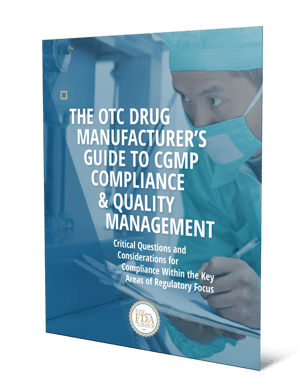It's a frequently cited issue appearing in FDA Form 483 Inspectional Observations and Warning Letters:
"Failure to establish and follow written procedures applicable to the responsibilities of the quality control unit [21 CFR 211.22(d)]."
Many times, these issues stem from a misunderstanding of the Quality Unit's responsibilities and scope. Other times, they're rooted in staffing the unit with personnel who are qualified and capable of carrying out its duties relative to the quality control and quality assurance demands of production.
Read on for a summary of the critical components of a compliant Quality Unit, including FDA's definition and scope, its core responsibilities, and insight into the overcoming the growing resourcing challenges firms face today.
Defining the Quality Unit
Before FDA issued its 2006 guidance, Quality Systems Approach to Pharmaceutical Current Good Manufacturing Practice Regulations, the term "Quality Unit" was not precisely defined in FDA regulations.
This guidance solidified the concept in more concrete terms:
"This guidance uses the term quality unit (QU) to reflect modern practice while remaining consistent with the CGMP definition in § 210.3(b)(15). The concept of a quality unit is also consistent with modern quality systems in ensuring that the various operations associated with all systems are appropriately planned, approved, conducted, and monitored."
Responsibilities of the Quality Unit
In the guidance referenced above, FDA points to CGMP regulations which broadly assign the Quality Unit to "create, monitor, and implement a quality system."
Regulators also define its scope and impact on other units, noting that while the Quality Unit "should not take on the responsibilities of other units of a manufacturer’s organization, such as the responsibilities handled by manufacturing personnel, engineers, and development scientists," it does not absolve other units of their quality-related responsibilities, saying "such activities do not substitute for, or preclude, the daily responsibility of manufacturing personnel to build quality into the product."
Given this framework within the organization, FDA assigns a number of Quality Unit duties consistent with modern quality systems approaches:
- "Ensuring that controls are implemented and completed satisfactorily during manufacturing operations"
- "Ensuring that developed procedures and specifications are appropriate and followed, including those used by a firm under contract to the manufacturer"
- "Approving or rejecting incoming materials, in-process materials, and drug products"
- "Reviewing production records and investigating any unexplained discrepancies"
The following checklist puts these duties in more practical terms. (This is not an exhaustive list.)
|
Quality Unit Personnel
In addition to outlining the Quality Unit's responsibilities, FDA notes that under a quality system, "it is normally expected that the product and process development units, the manufacturing units, and the QU will remain independent."
Regulators specifically warn against assigning a single individual to perform both production and quality functions except in "very limited circumstances."
"In very limited circumstances, a single individual can perform both production and quality functions. That person is still accountable for implementing all the controls and reviewing the results of manufacture to ensure that product quality standards have been met. Under such circumstances, it is recommended that another qualified individual, not involved in the production operation, conduct an additional, periodic review of QU activities."
This expectation is especially salient given the uptick in Warning Letters (notably pertaining to OTC manufacturers in particular) citing Quality Unit deficiencies in 2018 and 2019.
As we explore in a recent white paper, many of these issues are rooted not only in establishing and documenting quality roles and responsibilities, but sufficiently staffing the unit with the personnel required to adequately carry out the unit's duties as they've been established and documented.
As these Warning Letters demonstrate, regulators expect firms to staff their Quality Unit to reflect the scope and complexity of the manufacturing operations under their oversight. When regulators discover that such a vital function is under-resourced (whether in terms of the number of personnel or in the qualifications they carry), it's often a signal that other deficiencies may exist due to resourcing—sparking further investigation and scrutiny.
Overcoming the Challenges of Staffing Quality Personnel
Staffing quality personnel in accordance with regulators' expectations can be a challenge. This is especially true in a tightening labor market where the need for specialized skills and experience has made high-skilled resourcing extremely competitive, expensive, and fraught with risk.
For these reasons and others, life science firms are increasingly turning to more attractive alternatives to traditional full-time hiring. Sophisticated staff augmentation models, for example, are specifically designed to give firms easy, convenient access to the "unicorns" they need: those with specific skillsets, experience, and qualifications—all without the challenges that often result in delays and setbacks when resourcing efforts fall short.
Combined with dedicated project management, these staffing solutions lift the administrative burden of recruiting giving hiring managers the flexibility needed to complement the often cyclical nature of life science projects. Time is spent understanding needs and identifying a perfect-fit resource rather than squandered in unreliable recruiting channels, helping everyone accomplish their goals and move forward—faster, easier, and more reliably.
Learn more about our Quality & Compliance Staff Augmentation services here and grab our free white paper below to learn more about assessing Quality Unit compliance with examples of recent deficiencies cited in FDA warning letters.

The OTC Drug Manufacturer's Guide to CGMP Compliance & Quality Management
Grab the free guide.

